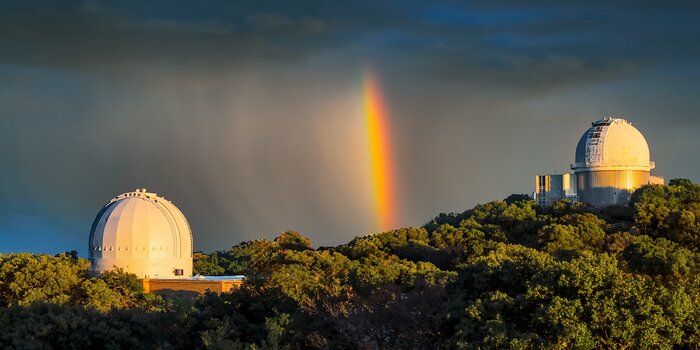Primitive Spectroscopy above KPNO
A rainbow rises to the clouds over Kitt Peak National Observatory (KPNO), a Program of NSF’s NOIRLab. This image, taken during one of the public stargazing programs at Kitt Peak, features the KPNO 2.1-meter telescope (right), operated by NOIRLab, and the Robotically Controlled Telescope (left), operated by the RCT consortium. In addition to cameras, many of the telescopes at KPNO are equipped with spectrographs which separate the light into its constituent colors, just as water droplets in rain clouds split sunlight into a rainbow. Knowing the amount of light that a celestial object produces at each wavelength allows scientists to measure the object’s various properties. With spectroscopy, we’ve measured the composition of exoplanetary atmospheres, the metallicity of stars, the motion of celestial planets, and the distances to far-away galaxies. More information can be learned through spectroscopy than from imaging alone, making it a crucial tool for studying the Universe.
Credit:KPNO/NOIRLab/NSF/AURA/D. Salman
About the Image
| Id: | iotw2412a |
| Type: | Photographic |
| Release date: | March 20, 2024, noon |
| Size: | 6000 x 3000 px |
About the Object
| Name: | KPNO 2.1-meter Telescope, Robotically Controlled Telescope |
| Category: | Kitt Peak National Observatory |
